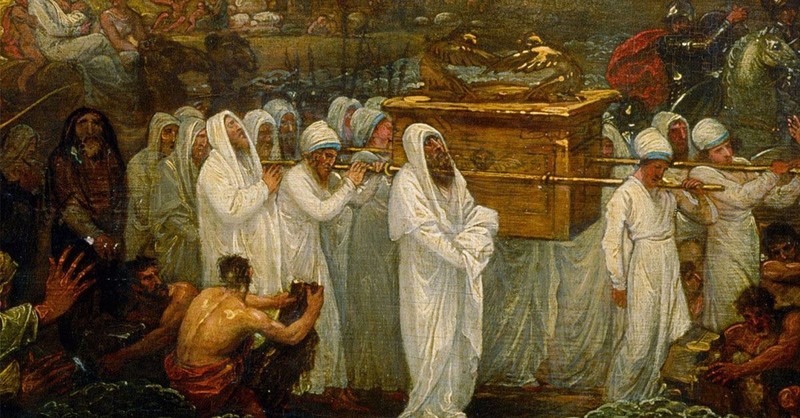6 Things You May Not Know about the Ark of the Covenant
- Bethany Verrett Writer
- Updated Jan 27, 2021

The ark of the covenant is more than Biblical history; it is mythical. Elevated to soaring heights of fantasy and legend after disappearing centuries ago, people have long sought to discover the truth about it. Hollywood even elevated it to superstardom by making it the primary focus of the Stephen Spielberg blockbuster "Indiana Jones and the Raiders of the Lost Ark." While a fun time, the film fails to capture the spiritual significance of the golden chest. Because it disappeared, many misconceptions about God’s ark arose.
While the Bible is silent on the ark’s ultimate fate, there are still centuries of history covered in the Bible that detail its construction, use of worship, and how its presence testified to the power of God.
What Is the Ark of the Covenant?
Before we dive into some facts you may not know about the Ark of the Covenant, we first have to establish what it is. The Ark of the Covenant was a housing vessel for the Lord. Depictions of this rectangular container often had angels atop it with their wings touching. The top of the Ark was known as the Mercy Seat.
Priests would often have to carry the Ark with long poles. If they accidentally touched it, they would instantly die. The reason for this is because God's glory and presence cannot be touched by man. Our sinful natures cause us to keel over if we come into the presence of the Lord, without the Holy Spirit residing within us.
Inside the Ark sat the Ten Commandments, Aaron's staff, and a jar of manna. Each of these represented something important (the law, the priesthood, and God's provision, conjectured by theologians).
What Is the History of the Ark of the Covenant?
Most of the time, since its creation, the Ark of the Covenant stays within the Tabernacle (a moving temple) and later the temple. But sometimes, throughout Israel's history, the Ark goes on the move.
For instance, the Philistines manage to capture the Ark during Samuel's childhood and take it to their god Dagon, until the Ark causes a plague in their land and breaks their idol statue. During another instance in David's reign, the Israelites attempt to return the Ark, but because a man tries to stop the Ark from falling with his bare hands, he dies.
Sadly, the Ark disappears from the narrative when the Babylonians sack Jerusalem and destroy the temple. The Ark goes missing from the narrative then.
Now that we've established the identity and historical context of the Ark, are six facts about the Ark of the Covenant:
Specification and Dimensions
Much like we have the exact dimensions and instructions for Noah’s ark in Genesis, Exodus 25:10-22 describes the process and the parameters for the creation of the chest. The chapter begins, “The Lord said to Moses”, and begins to outline God’s specifications for the creation of objects to be used in worship. The ark is the first one described.
Made from a base of acacia wood - a hardwood, scratch-resistant, and known for its durability - it had a gold overlay. The poles used to carry the ark were of the same material. On top of the ark, was the mercy seat, or kapporeth in Hebrew. The Lord commanded: “You shall make a mercy seat of pure gold...And you shall make two cherubim of gold...Of one piece with the mercy seat shall you make the cherubim on its two ends” (Exodus 25:17-19). God’s presence settled on the mercy seat when it came into the tabernacle to be with the nation of Israel.
The Three Important Artifacts inside the Ark
These were the Ten Commandments, Aaron’s budded staff, and manna. As a container vessel, the ark carried artifacts that spoke to key moments during Israel’s time in the wilderness. The second set of stone tablets represented the law - the Old Testament standard of righteousness. Moses smashed the original tablets in Exodus 32 after the Israelites made the golden calf to worship.
The rod of Aaron was the same rod which God turned into a serpent before Pharaoh. However, the moment noted more significant by the writer of Hebrews, was the budding and flowering of the rod. In Numbers, the people of Israel began to grumble against Moses and Aaron’s leadership, and the Lord had just struck down a group of rebels. To prove the chosen priesthood of Aaron and his line, the Lord commanded the tribes of Israel to set out twelve staffs, with Aaron’s representing the tribe of Levi, the tribe God appointed to the priesthood. They left them out overnight, “and behold, the staff of Aaron for the house of Levi had sprouted and put forth buds and produced blossoms, and it bore ripe almonds” (Numbers 17:8). For the Israelites, this rod represented the line of the priesthood.
Finally, the cup of manna was clear evidence of God’s provision for His people. Manna sustained the Israelites when they wandered in the wilderness after they fled Egypt. The word manna appears to express their confusion about what it was, as they exclaimed upon seeing it for the first time, “what is it?” Every morning for forty years, the sweet, flaky, white substance that was similar to coriander kept the Israelites fed, combined with quail in the evening. The Israelites honored God for His kept promises and miraculous provision by keeping a sample of manna in the ark.
Was it Holy?
It can be easy to assume the gold-plated, special vessel that held the law, the symbol of the priesthood, and the proof of God’s provision held a special, perhaps mystical status. However, what truly made it special - what made it important - was the actual manifestation of God’s presence. The mercy seat served as an actual seat for the Lord in the Tabernacle, and eventually in Solomon’s temple. Here, the Lord’s Spirit indwelled and filled the space as a cloud. The true power of God rested upon the Ark.
What Was the Purpose of the Ark?
Because the Lord’s Spirit came in all His glory, few could come into its direct presence. Once a year, on the High Holy Day of Yom Kippur, the Day of Atonement, the high priest entered the temple and sprinkled the blood of the sacrifice upon the cover of the ark. This action atoned for the sins of the whole nation. The priest who went into the temple during the time of Yom Kippur had to be fully right with God, lest he be struck dead. Today, Christians believe Jesus Christ serves as our High Priest and as the sacrifice. “In Him we have redemption through His blood, the forgiveness of sins, in accordance with the riches of God’s grace” (Ephesians 1:7).
Who Stole the Ark?
The Philistines captured God’s Ark after the battle of Shiloh, where the sons of the High Priest Eli - Hophni and Phinehas - were killed. It did not stay in any one place for very long, as disaster seemed to strike the Philistines whenever they moved what they believed to be a war prize. From hemorrhoids, to mice, no matter where the Philistines moved the Ark, trouble followed. It culminated in them putting the Ark in their pagan temple, and the statue of their false god Dagon was found prostrate before the Ark twice - the second time, broken. 1 Samuel 5:4 says, “...and the head of Dagon and both his hands were lying cut off on the threshold.” The Philistines only kept it seven months according to 1 Samuel 6:1, because of all the troubles that befell the cities that held the Lord’s ark.
Why Did David Dance before the Ark?
The last years of King Saul’s reign were tumultuous and bloody. When David came to the throne of Israel, he had to take Jerusalem from the Jebusites and fight back an attack from the Philistines. After these victories, David felt led to bring the ark of the covenant to the capital city. Though it had a brief three-month stay in the house of a man named Obed-edom, it was finally ushered to David’s city. So joyful was David, the Bible records, “And David danced before the Lord with all his might, wearing a priestly garment” (2 Samuel 6:14). The Lord’s presence should still inspire us to rejoice like David today, for today we do not need the ark to experience it; He lives within us!
So where does the ark of the covenant get its fearsome reputation that lead to its portrayal as a weapon in "Raiders of the Lost Ark"? There are two incidents in its history that most likely informed this portrayal where the Lord struck down people who did not treat the ark with appropriate reverence. Once in the town of Beth-Shemesh, and once with a man named Uzzah. In the book of Numbers, the Lord gives an explicit command that only Levites may handle the ark, and that, “...if any outsider comes near, he shall be put to death” (Numbers 1:51). In both instances, Israelites who knew the law chose to disobey, and interacted with the ark of the covenant contrary to God’s word.
The ark of the covenant acted as the symbol of God’s holiness, and not abiding by the rules set forth brought about His wrath. The power of the ark was not in the thing itself, but in the wonder and majesty of Jehovah, whose presence once rested there, but now indwells within each believer.
Photo credit: Wikimedia Commons/Public Domain/Benjamin West




















